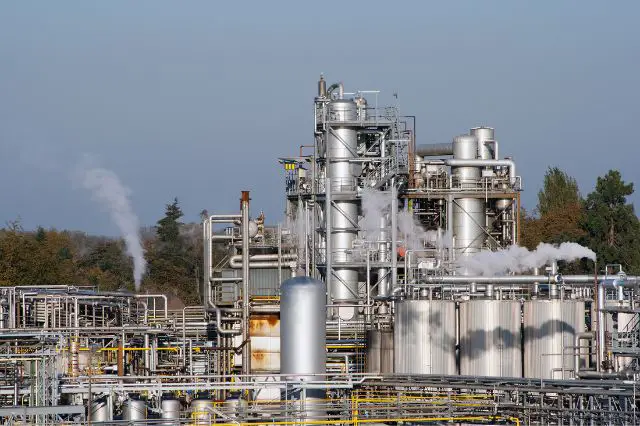In an era marked by technological advances and growing environmental concerns, the manufacturing sector stands at a critical juncture. The adoption of sustainable practices is not just an ethical choice but a strategic imperative that drives efficiency and regulatory compliance.
How can manufacturers reconcile growth with environmental stewardship? This article explores pivotal sustainability practices that every manufacturing plant must consider to thrive in the modern economy.
As environmental regulations tighten and consumer preferences shift towards eco-friendly products, manufacturers are compelled to innovate. This shift is not just beneficial for the planet—it also offers a competitive edge in a rapidly changing market.
Energy Efficiency
Energy consumption remains a primary concern for manufacturers. With rising fuel costs and stringent regulations, energy efficiency is no longer optional. Implementing state-of-the-art energy management systems can lead to substantial cost savings and reduce the carbon footprint of manufacturing operations.
Consider the success stories of leading global manufacturers who have integrated smart sensors and AI-driven analytics to optimize energy use. Isn’t it time all manufacturers took this step? Moreover, transitioning to energy-efficient lighting and machinery can drastically cut power usage without compromising output.
Initiatives like ISO 50001 provide frameworks for establishing, implementing, maintaining, and improving an energy management system. By prioritizing energy efficiency, factories not only reduce operational costs but also contribute to the broader goals of global energy conservation and climate change mitigation.
Waste Reduction Strategies
Reducing waste is a fundamental aspect of sustainable manufacturing. Techniques such as lean manufacturing can significantly decrease waste production by improving the efficiency of manufacturing processes.
Moreover, implementing comprehensive recycling programs and using materials more judiciously not only minimizes environmental impact but also reduces costs. This approach not only helps the planet but also enhances the company’s bottom line.
Encouraging a philosophy of ‘zero waste’ can further push manufacturers to innovate in their processes and product designs.
Additionally, digital tools and software can track waste generation and help in pinpointing areas for improvement. Such proactive measures not only help in regulatory compliance but also foster a culture of responsibility and innovation within the manufacturing sector.
Adoption of Renewable Energy Sources
Transitioning to renewable energy sources like solar and wind is becoming increasingly viable for manufacturers. Despite the upfront costs, the long-term benefits include lower energy bills and reduced dependency on non-renewable resources.
How can manufacturers overcome the initial hurdles and reap the benefits of renewable energy? By leveraging government subsidies and incentives, the financial burden of these technologies can be alleviated.
Furthermore, investing in renewable energy can secure energy supply and price stability in the long term, insulating manufacturers from the volatility of fossil fuel markets. Partnerships with renewable energy providers can also facilitate the transition, enabling manufacturers to focus on their core activities while experts handle energy production.
Implementation of a Dust Collection System
Among the less discussed yet critical aspects of sustainable manufacturing is air quality control, facilitated by an effective dust collection system. These systems play a pivotal role in ensuring the air within and around the manufacturing plant remains clean, which is crucial for meeting health and safety standards and minimizing particulate contamination.
Isn’t ensuring the health of your workforce and the environment worth investing in such technologies? Upgrades to more efficient models can reduce energy consumption and enhance filtration capabilities.
Regular maintenance and monitoring can further improve the effectiveness of dust collection systems, preventing potential health hazards and machinery downtime. By implementing robust dust collection practices, manufacturers not only comply with air quality regulations but also demonstrate their commitment to the well-being of their employees and the community.
Sustainable Supply Chain Management
A sustainable supply chain is crucial for reducing a plant’s overall environmental impact. By choosing suppliers who also commit to sustainable practices, manufacturers can ensure that sustainability permeates every level of their production process. This not only aligns with global sustainability goals but also meets the rising consumer demand for ethically produced goods.
Additionally, integrating technology to monitor supply chain sustainability can provide real-time data to make better decisions. Blockchain technology, for instance, offers transparency that can reassure both manufacturers and consumers about the ethical credentials of the supply chain.
Engaging in collaborative efforts with suppliers to achieve sustainability targets can lead to innovations that benefit the entire industry.
Water Conservation Techniques
Water scarcity is a pressing global issue, and manufacturing plants are significant consumers of this precious resource. Innovative water management strategies, such as using closed-loop systems that recycle water, can dramatically reduce water usage.
Effective water management is not only a corporate responsibility but also a necessity that can dictate a plant’s ability to operate in water-scarce regions. Technologies like advanced filtration and reverse osmosis can enhance water recycling efforts, making processes more sustainable.
Education and regular audits can ensure these systems operate at peak efficiency. By taking proactive steps toward water conservation, manufacturers can safeguard their operations against future water shortages and contribute to global efforts to preserve this vital resource.
Employee Training and Engagement
Sustainable practices only yield results when the workforce is knowledgeable and engaged. Training programs that emphasize the importance of sustainability can inspire employees to adopt best practices in their daily operations.
Furthermore, actively involving employees in sustainability initiatives can lead to innovative ideas and solutions that drive the company forward. Engagement strategies like workshops, continuous education programs, and incentivizing sustainable behaviors can strengthen this culture.
Feedback mechanisms can also be introduced to encourage employee contributions to sustainability challenges. By investing in its people, a company can foster a team that is not only proficient but also passionate about implementing sustainable practices.
Regulations and Compliance
Navigating the complex landscape of environmental regulations is a challenge for any manufacturer. Staying ahead of regulatory requirements not only helps in avoiding penalties but also in gaining incentives available for sustainable operations.
Proactive compliance is indicative of industry leadership and commitment to corporate social responsibility. Keeping abreast of international standards can help manufacturers expand into new markets and gain a favorable reputation.
Regular audits and third-party certifications can underscore a company’s dedication to sustainability. Engaging with policymakers can also influence future regulations, ensuring they are both practical and beneficial for the industry.
Looking Ahead: The Future of Sustainable Manufacturing
What does the future hold for sustainable manufacturing? With rapid advancements in technology, such as the Internet of Things (IoT) and machine learning, plants can achieve unprecedented levels of efficiency and minimal environmental impact.
The industry is on the brink of a revolution, with sustainability at its core. Emerging technologies like 3D printing and advanced robotics promise to further reduce waste and energy consumption.
As consumer awareness grows, so does the demand for sustainable products, which in turn drives the industry towards greener solutions. It is a dynamic time for manufacturers, where innovation and sustainability are becoming the pillars of industry success.
Conclusion
The journey towards sustainable manufacturing is ongoing and evolving. By embracing these practices, manufacturers can ensure the viability of their businesses and contribute to a sustainable future.
As we continue to innovate and implement these practices, the question remains: what new technologies and methods will we see next? Let’s continue to push the boundaries of what’s possible in sustainable manufacturing. It’s clear that the path forward is paved with opportunities for growth, innovation, and a sustainable legacy.
Are we ready to take these steps? Only time will tell, but the blueprint is certainly there for those ready to embrace it.














Leave a Reply